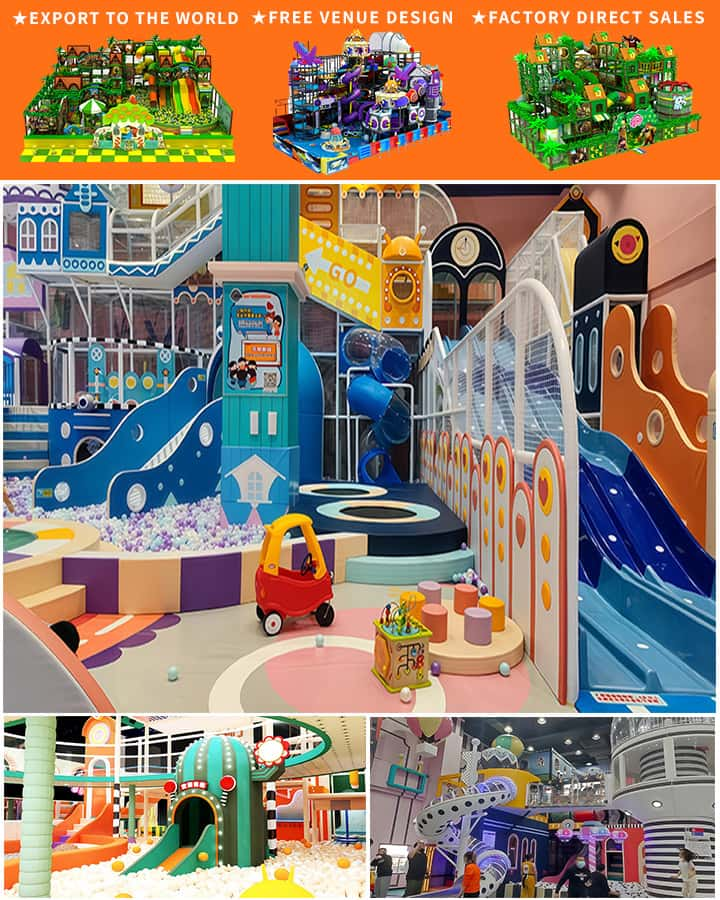Starting a children’s play center requires careful planning and strategic foresight. This business plan will guide you through the essential steps needed to create a thriving, family-friendly establishment that both parents and children will love.
Market Research and Analysis
Before diving into the specifics of your business plan, it’s crucial to conduct thorough market research. Understand the demand for children’s play centers in your chosen location by analyzing demographic data, local competition, and community needs. Look for trends in family entertainment and identify any gaps in the market that your play center could fill.
Survey potential customers to gather insights on their preferences, spending habits, and expectations. This information will help tailor your services and offerings to meet the needs of your target audience effectively.
Mission and Vision
Define the mission and vision statements for your children’s play center. Your mission statement should articulate your core purpose and guiding principles, while your vision statement should outline the long-term impact you aim to achieve. For instance:
Mission Statement: To provide a safe, engaging, and enriching environment where children can explore, learn, and have fun.
Vision Statement: To become the premier destination for families seeking high-quality, educational, and entertaining experiences for their children.
Business Model and Revenue Streams
Outline your business model clearly, detailing how you plan to generate revenue. Revenue streams might include:
- Admission Fees: Entry tickets for children and accompanying adults.

- Membership Programs: Discounted rates or exclusive perks for recurring visitors.
- Party Packages: Customizable birthday party packages including food, decorations, and dedicated staff.
- Retail Sales: Selling toys, snacks, branded merchandise, and other child-related products.
- Workshops and Classes: Hosting educational workshops, art classes, or physical activity sessions for an additional fee.
Location and Infrastructure
Selecting the right location is pivotal. Consider accessibility, visibility, and foot traffic when choosing a site. Ideally, your play center should be located in a central area with good parking facilities and easy public transportation access.
Invest in high-quality infrastructure to ensure safety and enjoyment:
- Safety Measures: Install soft flooring, secure play equipment, and maintain proper hygiene standards.
- Entertainment Facilities: Incorporate diverse play areas like ball pits, climbing structures, slides, sensory rooms, and quiet reading corners.
- Rest Areas: Comfortable seating and relaxation zones for parents and guardians.
- Cafeteria/Snack Bar: Offer nutritious snacks and beverages to keep energy levels up.
Marketing Strategy
A comprehensive marketing strategy is vital for attracting and retaining customers. Employ a mix of traditional and digital marketing techniques:
- Branding: Create a memorable brand identity with a catchy name, logo, and tagline.
- Website: Develop an informative, user-friendly website showcasing your amenities, events, and customer testimonials.
- Social Media: Utilize platforms like Facebook, Instagram, and Twitter to engage with the community, share updates, and run promotions.
- Local Partnerships: Collaborate with schools, daycare centers, and local businesses for community outreach and cross-promotions.
- Event Hosting: Organize grand opening events, seasonal activities, and special promotions to draw attention.
Operational Plan
Your operational plan should cover the logistics and daily management of the play center:
- Staffing: Hire friendly, reliable staff trained in child supervision, first aid, and customer service.
- Operating Hours: Determine the most convenient hours of operation for families, possibly including evenings and weekends.
- Maintenance: Implement a regular maintenance schedule to ensure all equipment remains in top condition.
- Health and Safety Policies: Establish clear policies for health, safety, and emergency procedures to protect both children and staff.
Financial Projections
Provide detailed financial projections including startup costs, operating expenses, and revenue forecasts. Key components should include:
- Initial Investment: Costs related to leasing/buying property, renovations, equipment purchase, and initial marketing campaigns.
- Operational Expenses: Ongoing costs such as utilities, salaries, insurance, supplies, and maintenance.
- Revenue Estimates: Based on admission rates, membership sales, party bookings, and retail income.
- Break-even Analysis: Calculate the point at which your business will start turning a profit.
Conclusion
Launching a children’s play center is an exciting venture that demands diligent planning and execution. By following this comprehensive business plan, you can set a strong foundation for a successful and sustainable enterprise that brings joy to children and value to parents. Remember, adaptability and continuous improvement are key to staying relevant and competitive in the family entertainment industry.




